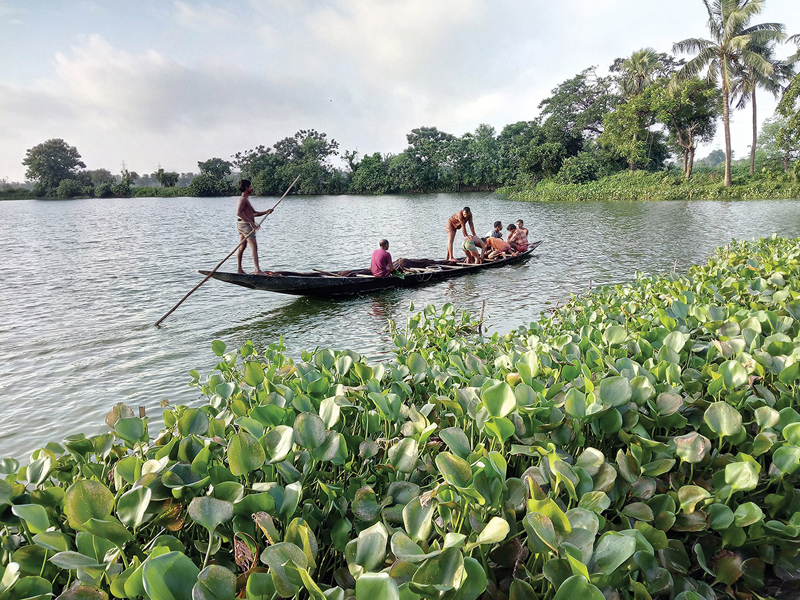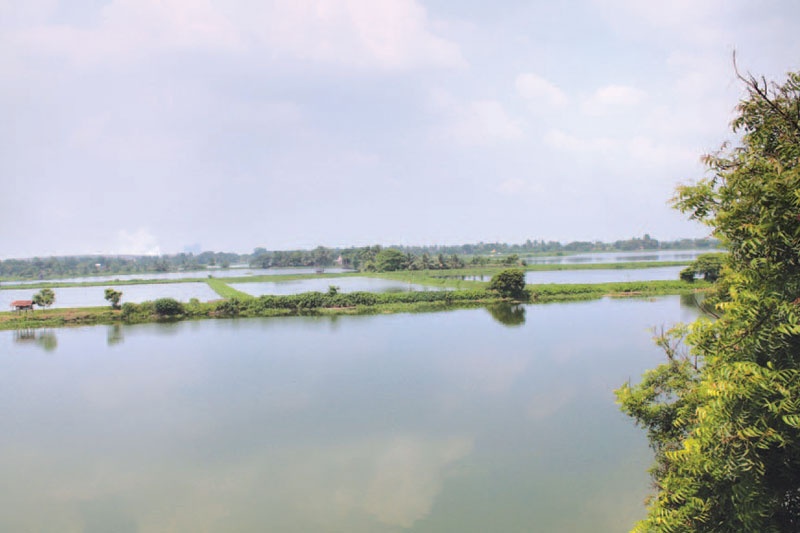Environment & Ecology
Mapping a Waste Treatment Landscape | Dhruba Das Gupta
LA 58 |
|
| A trip down memory lane to when Dhrubajyoti Ghosh identified and attempted to map the East Kolkata Wetlands in an attempt to draw a complete picture of the ecosystem. His methods comprised participatory paper mapping and encashed in the knowledge of the locals who knew the region better than any external surveyor could possibly hope to. He became a spokesperson for the conservation of the East Kolkata Wetlands and through his efforts, the wetlands were granted a Protected Area status.
|
|
 |
|
For any city administration, wastewater is typically a subject of concern because of the cost of its treatment. According to a 2015 Central Pollution Control Board report, only 37 per cent of all urban wastewater is treated in India. Wastewater treatment, especially in the cities located on or close to the banks of the Ganga, is a sad story.
The commonly held worldview is that wastewater is a pollutant. But in tropical countries with abundant sunshine, this need not be the perspective. The 12,500-hectare stretch of East Kolkata Wetlands is the largest in the world that treats a city's sewage and also manages its solid waste. By-products are fish and vegetables that feed the city. More than 1,18,000 people1 are sustained by this wetland. They nurture this ecosystem to ensure their livelihood. East Kolkata Wetlands, known the world over as a Ramsar site or Wetland of International Importance, is an exemplar of wastewater treatment by a natural biological method.
The practice of wise use of domestic wastewater as a nutrient to produce food drew attention to a worldview which the non-literate wetland community had evolved based on their experiential learning. Late ecologist Dhrubajyoti Ghosh [1947 - 2018] understood its significance in the early 1980s, when not many even in the city knew about these wetlands or their function. Ghosh's understanding of this wetland ecosystem led him to map it following the fundamental scientific pattern of the wastewater utilization and resource recovery by the local community.
|
|


|
|

|
|
|
|
| CURRENT ISSUE: LA-61 |
|
|
|
|
environment, ecology and biodiversity |
RESCUING THE URBAN POLLINATORS
MADHURA KHADE
WETLANDS AT WORK
UNDERSTANDING WETLANDS
With inputs from Dr. C. R. Babu
CONSTRUCTED WETLAND AT RAJOKRI, NEW DELHI
[Delhi Jal Board]
Ankit Srivastava
CONSTRUCTED WETLAND AT NEELA HAUZ, NEW DELHI
Landscape and Environment Planning Department,
Delhi Development Authority
CONSTRUCTED WETLAND AT HAUZ KHAS LAKE, NEW DELHI
Tarun Nanda, Evolve Engineering
RESTORATION AND REJUVENATION OF RIVER YAMUNA FLOODPLAINS, NEW DELHI
Landscape and Environment Planning Department,
Delhi Development Authority
REIMAGINING THE CITY
YAMUNA RIVER PROJECT:NEW DELHI URBAN ECOLOGY
[Authors Inaki Alday and Pankaj Vir Gupta]
Review by Geeta Wahi Dua
REJUVENATION AND RESTORATION OF URBAN PONDS, GURUGRAM
Future Institute
SPURRING ECONOMIC REVIVAL THROUGH ECOLOGICAL RESTORATION,
NANHU, CHINA
Uma Sekar
heritage, urban design, landscape architecture |
FROM MY HOUSE TO YOUR HOUSE
In conversation with Miki Desai
CITY MAPS: MAPPING NATURE AND ENVIRONMENT
Review by Rabindra J. Vasavada
A SENSE OF SPACE
Anuraag Chowfla
IN CONVERSATION WITH RANJIT SABIKHI
DEMOCRACY, PARTICIPATION AND CONSULTATION
In conversation with Bimal Patel
city and culture |
OUR CITIES CAN FIGHT COVID-19 PROACTIVELY
Mriganka Saxena and Puneet Khanna
LOCALIZING FUTURES
Geeta Wahi Dua
BOURGEOIS ENVIRONMENTALISM AND THE VULNERABILITY OF THE POOR
UNCIVIL CITY: ECOLOGY, EQUITY AND THE COMMONS IN DELHI [Author: Amita Baviskar]
Review by Nikhil Dhar
STREETSCAPES IN PUNE
CREATING A HEALTHY AND WALKABLE NEIGHBORHOOD: AUNDH NEIGHBORHOOD UPGRADATION | PUNE
Prasanna Desai Architects
ABOUT RETAIL, TREES AND YOUNG VIBES:
JANGLI MAHARAJ ROAD | PUNE
Oasis Designs Inc.
EMERGENCE OF THE EPHEMERAL
Bijoy Ramachandran
seeing the unseen |
ART FOR ALL
St+Art India Foundation
|
|